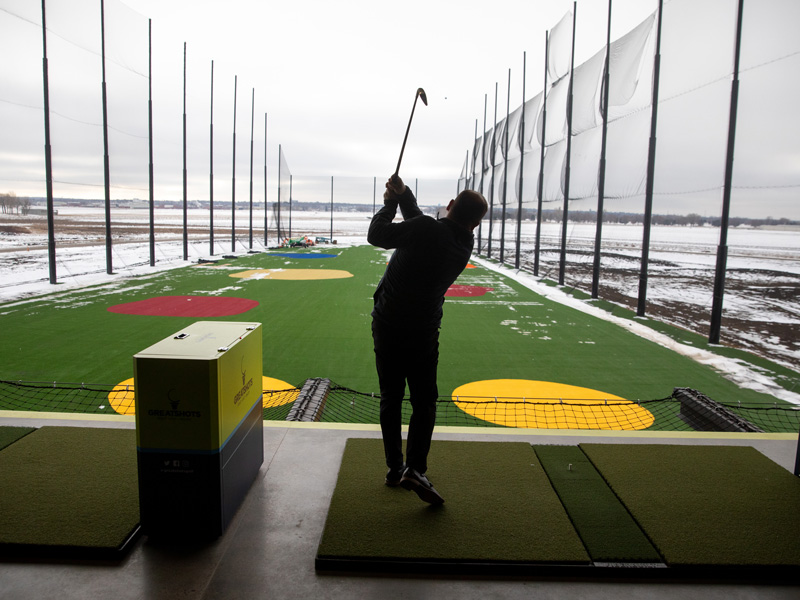Walking the golf course and the excitement of competition might lower the risk of early death among older adults, a new study finds.
About 25 million Americans play golf, which is a sport that can reduce stress and yield exercise benefits. Because it is social in nature and played at a controlled pace, people often continue playing into their retirement years.
Related: Golfing year-round in South Dakota
“Our study is perhaps the first of its kind to evaluate the long-term health benefits of golf. It is one of the most popular sports among older people in many countries,” said lead study author Dr. Adnan Qureshi. He is a professor of neurology at the University of Missouri, in Columbia.
“The U.S. Department of Health and Human Services Physical Activity Guidelines for Americans does not yet include golf in the list of recommended physical activities,” Qureshi said. “Therefore, we are hopeful our research findings could help to expand the options for adults to include it.”
For the study, researchers analyzed risk factors for heart disease and stroke in adults 65 and older. Nearly 5,900 participants with an average age of 72 were studied. Of them, 384 identified as golfers.
During follow-up, 8% of golfers suffered strokes and nearly 10% had heart attacks. Golfers had a significantly lower rate of death — 15% compared to just under 25% for non-golfers. However, the study did not prove that golfing itself boosts longevity.
“While walking and low-intensity jogging may be comparable exercise, they lack the competitive excitement of golf,” Qureshi explained.
“Regular exercise, exposure to a less polluted environment and social interactions provided by golf are all positive,” he said. “Another positive is that older adults can continue to play golf, unlike other more strenuous sports such as football, boxing and tennis.”
Read more
- Golf academy helps players of all ages, skill levels improve
- Exercising as an older adult? Here are some tips
- Gold medal performance after debilitating pneumonia
For golf or any sport, do some conditioning
No matter your sport or athletic activity, conditioning will make you better at it.
Every sport is a power event, whether you’re hitting a ball or riding a bike up a hill. In addition to working on the specific skills of the sport, you also want to build up the power you need to get the job done faster, harder and better.
You increase your power in two key ways:
- Doing resistance training, such as working with weights, to build basic muscle strength
- Stretching, to increase flexibility and improve your range of motion
The benefits of stronger, more flexible muscles boost your endurance and help prevent injury.
It’s also important to maintain a good cardiovascular conditioning through regular aerobic workouts. Cardio training helps you process oxygen and produce energy at a higher level. This helps you play your sport with less effort and for a longer period.
Head-to-toe preparation
The best strategy is to condition all muscles, no matter your sport. Otherwise, the muscles you ignore become weak and can be easily injured.
In addition, for peak performance, focus on those muscles emphasized in your sport. Here are some conditioning strategies for some popular spring sports.
- Baseball. This sport has a high risk of injury because players who stand around in the outfield suddenly have to sprint or dive for the ball. You should have flexible hamstrings and strong, well-balanced leg muscles. You also need to condition the back, shoulder and elbow muscles, which support throwing and batting.
- Golf. A golf swing puts demands on lower-back muscles. Building up your lower-back muscles provides stability and support, and improves the power of your swing. You should also increase strength and balance in the other muscles involved in your stroke — specifically, those in your midsection, shoulders, forearms and elbows.
- Tennis. This sport requires strong and balanced lower and upper legs. Serving and hitting the ball from a sideways position also puts great torque on the midsection. So, it’s important to condition the oblique muscles located on your side that twist your trunk. For power and injury prevention, strengthen shoulders, arms and elbows.
- Swimming. Pulling yourself through the water demands a strong chest and midsection. The muscles controlling the front and sides of the chest can become too strong for the muscles in the back and top of the shoulders. So you need to stretch the front and sides, and strengthen the back and top muscles. Because swimmers are always kicking, the muscles that control hips and knees also need to be strong.
You don’t have to be an elite athlete to benefit from good conditioning. Better strength and flexibility make any activity more enjoyable, no matter what your level of participation.
…
Posted In Golf, Orthopedics, Research, Senior Services
